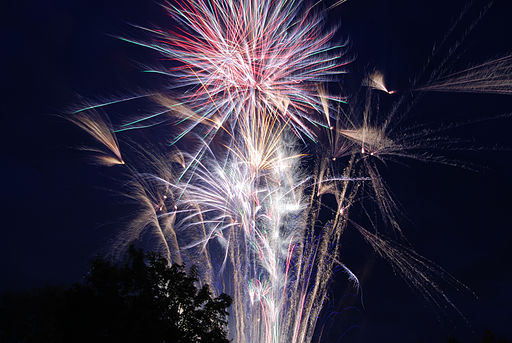John Philip Sousa’s marches embody qualities which are uniquely American. Listen to a British patriotic march like Elgar’s Pomp and Circumstance March No. 1 and you’ll hear the slow, stately, majestic character of England. By contrast, Sousa’s marches are faster and more brash, reflecting the optimistic innocence of a young country just beginning to flex its muscles on the world stage. Sousa’s marches provide a musical snapshot of the spirit of America around the turn of the twentieth century. For fun, listen to the British Grenadier Guards try to make The Stars and Stripes Forever conform to that regal British style. Do you notice something missing in this performance?
In celebration of Independence Day, let’s listen to one of Sousa’s most emotionally charged marches, Hands Across the Sea, which he composed in 1899. Here, it’s performed by the Eastman Wind Ensemble, conducted by Fredrick Fennell. It’s followed by other popular Sousa marches including Washington Post, El Capitan, and The Stars and Stripes Forever. You can find this recording on iTunes and at Amazon.
https://www.youtube.com/watch?v=h1ftdfB0NEM
Hands Across the Sea immediately grabs our attention with small surprises. Listen one more time to the short, rip roaring introduction and pause at 0:07. Think about all the possibilities that could have come next. You probably didn’t expect the musical curve ball that Sousa throws-these two defiant chords, resolving in a surprise D minor. At 1:10 we get another surprise as Sousa moves to B-flat major for the trio section. This melody is as noble as any of Elgar’s marches, but this is nobility through an American lens. Listen to the way the melody plays with our sense of expectation, stepping higher and higher before an almost choral-like resolution.
Now that we’ve heard these marches as Sousa wrote them, let’s finish up with this fun and virtuosic arrangement of The Stars and Strips Forever, played by two violinists from “The President’s Own” Marine Chamber Orchestra:

